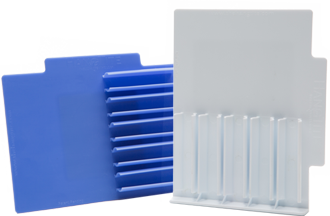The most convenient places in a fridge to store our stock of insulin may not be the best places.
We tend to think our refrigerators maintain a mostly consistent temperature throughout, but the average temperature over time can be 3 to 10 degrees (or more) above or below the thermostat setting—in different areas of the fridge.
The temperature in our refrigerator also fluctuates in cooling cycles, so every few hours - at the peak and valley of each cycle - the fridge temperature might briefly drop below or rise above what we would expect.
Tips For Fridge Storage
It makes sense, then, to store insulin in the fridge where, and how it will most likely maintain its effectiveness:
- Least Used. If you have more than one refrigerator in your home, or workplace, consider storing your insulin in the one that’s used (opened and closed) least often.
- Best Spot. The part of the fridge most consistent with the thermostat setting is the center, or middle shelf of the refrigerator.
- Although many people like the convenience of storing items in the door’s butter compartment, it’s typically positioned at the top of the fridge door. This area is often a few degrees warmer than the recommended upper limit (46°F / 8°C) for insulin storage. On a colder note, keeping medication pushed into a back corner, especially on a lower shelf, puts it at risk for freezing.
- The warmest areas of a refrigerator are typically the top shelf, vegetable drawers, and door compartments. The coldest spots are the lowest shelf, and the refrigerator’s back and side walls.
- Fluctuation Protection. Be aware that cooling cycle fluctuations in a refrigerator may make the warmest and coldest areas even more unsuitable for insulin, since the cycle’s peaks and valleys can be unexpectedly high or low.
- To protect medication from fluctuations keep it in its packaging, and consider putting it in an airtight container. Also, keep in mind that opening the door for one minute causes a speedy temperature rise inside the fridge.
- Seasonal Effects. Be attentive to any thermostat adjustments that need to be made as seasons change, particularly when temps turn tropical. Opening the fridge in hot and humid weather greatly effects the cooling cycle.
Just a little refrigerator wisdom can help ensure safe insulin storage, but for people wanting more peace of mind there is a temperature sensor and app combination called MedAngel that can help.
The MedAngel sensor is stored with medications and alerts users via an app when storage temperatures approach or exceed recommended limits. Find out more at the MedAngel website (link below).
Source: Laura Kramer, pharmaceutical sciences; MedAngel sensor and app
Photo credit: US Dept of Agriculture

